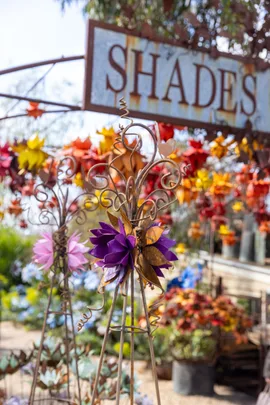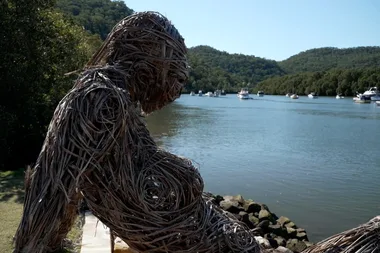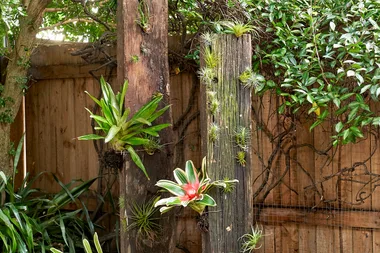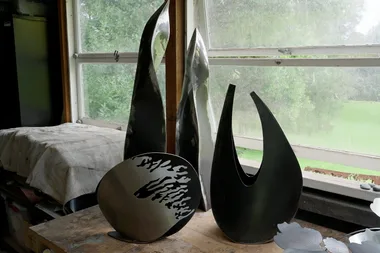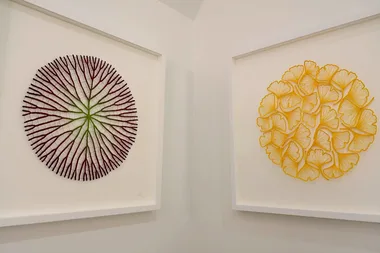Many of us are fond of a gnome, but garden art options are almost endless – from classic stone statues to modern geometric forms and upcycled creations. You can use huge urns, tree stumps, old wooden or metal wheels, driftwood, mosaics, or odd things that catch your eye while rummaging through council clean-ups. And if the style police loathe your choice, but you love it, go for it.
Traditional or whimsical, classical or modern, art gives your garden extra oomph. Your choice of art can enhance your garden’s personality and accentuate your gardening style.

Take inspiration from these giant metal flowers that never stop blooming, bird homes lifted from a fairytale, and plump chooks that won’t wake you at the crack of dawn. These maintenance-free additions are all from the Shades of Gray studio in country Victoria. They show that if carefully chosen and positioned, art and nature can be a potent force.
While art provides structure and interest, it also diverts attention from bare patches or poorly performing plantings, especially in winter when there’s not a lot going on. Here are our top tips for bringing a creative gallery into your garden.
7 tips for using sculptures in the garden

Size matters
Keep in mind the size of your art. A large piece can overwhelm a small space, while a small work will be engulfed by a large garden. If you really love your small piece, elevate it on a plinth for greater impact. Tripods can be used as a frame for climbing plants such as clematis, passionfruit or beans. A metal flower on top is not going to stop them.

Consider your materials
Be sure your art can survive the elements. Bronze is formidable and stone can be embellished with moss or lichen over time. Glass, resin and metal also cope with rain, heat and frosts. However, a cold snap may crack or shatter clay, and untreated timber will discolour, crack and eventually break down.

Placement is everything
Corners are ideal for garden art because they attract attention. You can position identical pieces each side of a flight of steps to make it more symmetrical – perfect if you like more structure in your garden.

Structure your space
Use an arch to frame a piece of art. Similarly, use a window as a frame when you want to see art from inside your home. This means visual interest is available both inside and outside of your home.

Utilise what you have
All aspects of your garden have the potential to become art, even a wayward tree stump. Tree felling means fewer nesting hollows for wildlife, so give them a haven in your garden. They don’t care about the architecture, only you do. And this is seriously cute!

Add interest with labels
We put names on our houses and labels on our kitchen canisters. A sign that highlights garden activities is just as appropriate. A metal sculptural sign will stay put during bad weather, and keep your garden tidy and organised.

Plant where the sun doesn’t shine
You don’t need to consider growing conditions with these blooms. In shaded areas, mix temperate-climate daisies, coneflowers and tulips with real plants that don’t need much maintenance.

Make the outdoors fun
Finally, sculptures can just be a bit of fun. If you love chooks but don’t want them scratching up your garden beds in search of worms, this little chap above is perfect for you.
About the artists
Peter and Chelly Gray started out as ceramicists, but a chance discovery of a roll of rusted wire had them twisting and curling it into a bird cage. They moved on to creating flowers, bird cages, chooks and signs from recycled fencing wire, copper wire, galvanised iron, steel – any metal they could use. The Guggenheim Museum in New York exhibited their pieces and all were sold. The shapes and colours of their creations change each year. They draw on a kaleidoscope of inspiration, from the colours in their garden to images they come across in flower books and magazines.
